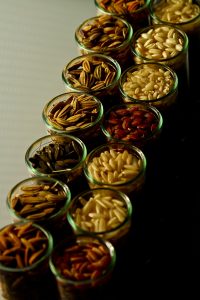Often hailed as the “queen” of rice, Thailand’s Jasmine variety has reigned over many consumers’ palates because of its rich aroma, texture, and taste. In 2009, however, word spread that Jasmine had found its rival. The United States had come up with its own fragrant variety called Jazzman.
U.S. demand for Jasmine-type aromatic varieties accounts for about 80 percent of the country’s total rice imports. Inasmuch as American farmers would like to take advantage of this increasing demand by growing these fragrant varieties, only Jasmine 85 is currently available in the U.S.
Initially released in Texas in 1989, it is an improved indica variety developed by the International Rice Research Institute. Unlike its relative varieties, however, Jasmine 85 is inferior in quality and as such, not widely grown in the U.S. Challenged to satiate the American demand for fragrant rice, the Louisiana State University Agricultural Center in 1992 started working on an improved Jasmine-type variety that would have better milling quality and higher yield capacity on top of having special characteristics similar to those of Jasmine rice. After 12 painstaking years of crossing elite U.S. long-grain genotypes and Jasmine-type germplasm, plant breeders finally came up with Jazzman—a product of the cross between 96a-8, an unreleased Chinese aromatic rice line, and Ahrent, a variety from Arkansas.
Following the news of Jazzman’s release in the market, Thailand conducted tests to compare Jasmine and Jazzman. The results showed that Jasmine’s quality still reigns superior. Nonetheless, Jazzman’s higher yield capacity could prove to be a critical characteristic. Unlike Jasmine, which can yield 2.5 metric tons per hectare, Jazzman can produce 7.9 metric tons in the same area. Moreover, it is a moderately early-maturing and short-statured variety with excellent seedling vigor. On average, it can reach heading from emergence in 86 days. Standing at an average height of 100 centimeters, a Jazzman rice plant does not easily bend or break. It is also resistant to sheath blight and blast—an important trait farmers look for.
Now, considering the growing demand for such fragrant rice varieties, an improved and better yielding Jazzman could soon sing its way into the hearts of more consumers and find its own niche in the U.S. market. More American farmers are expected to grow this new variety for good returns and more consumers can also be expected to turn to it as an affordable alternative to Jasmine rice.
______________________________________________
Dr. Sha is a rice breeder and associate professor at the Louisiana State University Agricultural Center.Dr. Linscombe is a senior rice breeder and director of the center.










